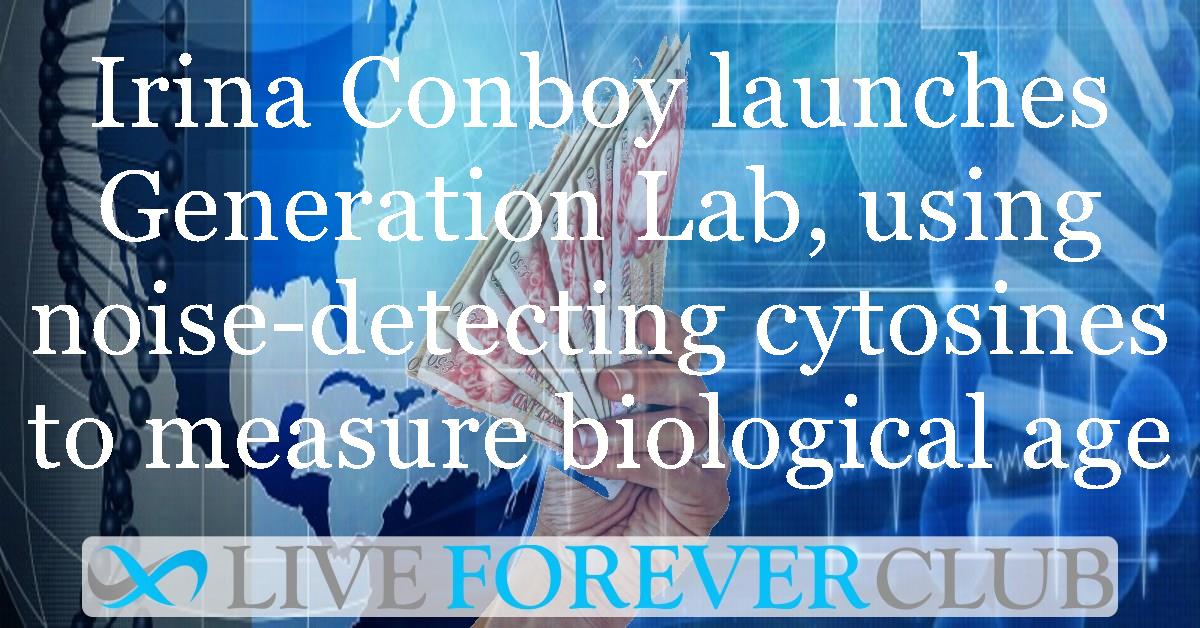In a world where the ageing process is commonly perceived as an inevitable decline, Generation stands out as a potential source of encouragement. Their Aging Clock Biological Age Test Kit is more than a commercial product; it represents an exploration into the realm of personalised healthcare.
What distinguishes Generation is their commitment to understanding the twelve primary factors contributing to ageing, based on a proprietary formula supported by extensive scientific research. Generation delves into the root causes of ageing, employing an approach that addresses all twelve factors, with input from scientists affiliated with Harvard Medical School and insights from over 300 studies.
Generation's study to understand ageing
The research conducted at the Department of Bioengineering and QB3, University of California, Berkeley, presents a transformative approach to understanding ageing. Their study focuses on the limitations of DNA methylation (DNAme) clocks using Elastic Net (EN) machine learning and introduces a novel concept, the "noise barometer," for assessing the epigenetic pressure of ageing and disease.
DNAme clocks, primarily developed using EN, have been a popular tool in ageing research. EN uses regularisation in large datasets to select features and fit a linear model to data. However, these models have limitations. They often do not reflect the overall epigenetic state, instead focusing on a small subset of cytosines. The training process involves multiplying beta values (a surrogate measure of methylation) by weights, regardless of their biological significance, to create a correlate-predictor relationship.
The research team expanded the examination of DNAme clocks across various datasets, including healthy controls and patients with different diseases. They discovered that while EN models can predict age and mortality risk, they do not rely on specific changes in DNA methylation with age or its dysregulation.
The study revealed variable robustness in linear correlations across age ranges, with weaker correlations in certain age groups. This finding aligns with the non-linear changes in biological age throughout the lifespan.
Tests for accuracy and biological relevance showed that DNAme clocks could predict age but often inaccurately, leading to an overlap in age predictions for both healthy subjects and patients with diseases. This inconsistency is crucial because certain conditions, like Werner Syndrome or Down syndrome, significantly alter the ageing process, which should be reflected in the predictions.
To address these limitations, the researchers developed the "noise barometer." This novel metric measures biological age by focusing on cytosines that remain consistently methylated throughout life, hypothesised to be homeostatically vital. The dysregulation of these cytosines, quantified as the sums of standard deviations (SD) of their methylation values, signifies biological noise, a potential biomarker of ageing and disease.
The noise barometer diverges from previous methods by not relying on absolute beta values but on the noise (SD) of certain cytosines. This approach identified 460 cytosines with minimal change in their mean methylation with age but an increase in SD, indicating biological noise.
Further examination showed that this measurement of noise increase with age could distinguish between health and disease. It was found that 1/4th of the 450K DNAme array cytosines exhibited significant heteroscedasticity, with at least 20% increase in their SDs with age.
Implications for Health and Longevity
The research fundamentally changes how we understand ageing. Their "noise barometer" moves beyond traditional DNA methylation clocks, offering a more nuanced view of biological ageing. This approach emphasises the role of biological noise - the variability in DNA methylation - as a key marker of ageing and disease.
Personalised Medicine: The noise barometer offers potential for personalised medical interventions. By understanding the specific patterns of DNA methylation in individuals, healthcare providers could tailor treatments and preventive measures more effectively.
Early Detection of Diseases: The increase in biological noise might serve as an early warning system for age-related diseases. By tracking changes in DNA methylation patterns, it may be possible to detect diseases like Alzheimer’s or cardiovascular conditions earlier, when they are more treatable.
Lifestyle and Environmental Factors: This research underscores the impact of lifestyle and environmental factors on ageing. Factors like diet, exercise, and exposure to pollutants can influence DNA methylation patterns, suggesting that lifestyle changes could have a significant impact on slowing the ageing process.
Ageing Research: The noise barometer provides a new tool for researchers studying the ageing process. It could help in understanding why some people age more healthily than others and what interventions might slow down the ageing process.
Future Directions in Research
Expanding the Study Population: Future studies could expand the demographic diversity of participants, including different ethnicities and age groups, to understand how DNA methylation patterns vary across populations.
Longitudinal Studies: Long-term studies that track individuals over time would provide valuable insights into how DNA methylation patterns change with age and in response to various interventions.
Exploring Interventional Strategies: Research could focus on how different interventions, such as dietary changes, exercise, or medications, affect DNA methylation patterns and biological noise.
Technological Advancements: Advances in DNA sequencing and computational analysis will enhance the precision and ease of measuring DNA methylation, making the noise barometer more accessible and practical for widespread use.
Collaborative Efforts: Collaborations between biologists, geneticists, and data scientists are essential to further develop and refine this approach. Integrating different scientific perspectives will be crucial for advancing our understanding of ageing.
The implications of this research extend to public health strategies. By focusing on biological ageing rather than chronological age, health policies could more effectively target interventions to improve the health span of the population. This approach emphasises prevention and early intervention, potentially reducing the burden of age-related diseases on healthcare systems.
In conclusion, this research marks a paradigm shift in understanding biological age. It moves away from specific cytosines or genes as biomarkers to considering noise and dysregulation as key indicators. While further research is needed to refine the technique and broaden its application, the potential for a healthier, longer life is no longer just a dream, but a scientific possibility within reach.
The study is published in the journal Aging.








